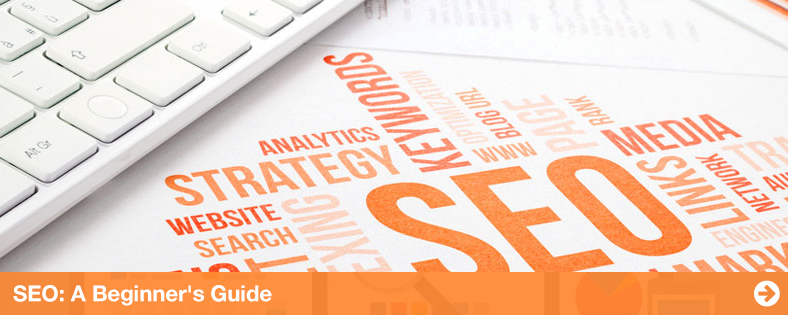While there are no silver bullet solutions to creating the perfect homepage, there are some best practices you can follow to ensure your website’s homepage is built for success.
With the right page elements and a good balance of brand personality and useful information, you can keep visitors on your website for longer and convert more visitors into customers.
[Tweet “What are the key ingredients that make up an effective homepage? Find out now…”]We like to practice what we preach, so here are seven key ingredients of an effective homepage, using some examples from our own homepage.
A Tagline With a Clear Unique Value Proposition (UVP)
When a potential customer visits your homepage, they’re going to decide if you have what they’re looking for in a matter of seconds.
A clear tagline next to your company logo or a prominent headline has the power to quickly convince people you’re the right fit for their needs.
The best taglines succinctly explain the main benefits of using your business and why visitors should explore more of your website.
 A tagline from our very own homepage, along with a clear call to action.
A tagline from our very own homepage, along with a clear call to action.
With so much online competition, you need to stand out from the crowd. A strong UVP will make it clear how your products or services can make customers’ lives better.
Signs of Credibility
There are various ways to improve your credibility and increase levels of trust. A small section highlighting past and present clients can be extremely powerful.
In the same way, try using customer testimonials, security seals, and money-back guarantees.
 Review widget on the LCN.com homepage, linking to our TrustPilot profile
Review widget on the LCN.com homepage, linking to our TrustPilot profile
If you have a high number of social media followers, show the figures. Social proof is a great way to boost your reputation.
 Using a real tweet as social proof – LCN.com homepage
Using a real tweet as social proof – LCN.com homepage
Straightforward Navigation
As soon as someone arrives on your homepage, they’re looking for specific information. Apart from giving clear signals about your relevancy and credibility, user-friendly navigation provides a clear route to where potential customers might want to go.
Make sure visitors can find the information they’re looking for straight away.
 A good navbar should not be too cluttered and offer a simple route into your core products and services
A good navbar should not be too cluttered and offer a simple route into your core products and services
This means having an uncluttered homepage with the main navigation links at the top of the page, and clear and understandable buttons within the content. Avoid too many options, as this can just lead to confusion.
A Prominent Phone Number
Displaying a phone number at the top of every page is key to building trust, and is especially important for new visitors who need the reassurance that you’re a genuine company, and can assist quickly with questions they may have.
 Our phone number is displayed above the navbar on every page on the site
Our phone number is displayed above the navbar on every page on the site
Not all people want to fill out a form or wait for an email. To make your phone number stand out on the page, try using bold colours and make sure it’s clickable for mobile users.
A Clear Call-to-Action Button
There should be at least one primary call-to-action button above the fold (before users have to scroll down) on the homepage.
Once visitors land on your page, you need to decide what you want them to do next.
 As we’re a domain registrar and web host, the domain checker is the key CTA on our homepage
As we’re a domain registrar and web host, the domain checker is the key CTA on our homepage
It may be to sign up for a free trial, subscribe to your newsletter, download a whitepaper, or fill out a contact form for a quote.
Make sure the button is highly visible so that people don’t get too distracted by other page content.
Giving visitors an immediate offer is a great way to get people to start a relationship with your brand.
Relevant Imagery
A simple and immediate way to strengthen your written content is through imagery.
It may be tempting to include a slider image, but this can be distracting, especially if you’re a smaller business trying to quickly get your message across.
Think about your UVP and how you can best represent it visually. A well-placed image will compliment your brand and engage visitors immediately.
There are many great resources to find royalty-free imagery online, but remember, always check the licence.
Related: Optimise images for SEO
Solid SEO
Although the main focus of your homepage should be the user experience and communicating your UVP, SEO should still be a factor.
At the very least, you should include your brand name or main products in the page title, make sure your meta description explains your UVP, and include H1 tags and image alt tags.
 Take a look at our free 6 lesson guide to SEO
Take a look at our free 6 lesson guide to SEO
Don’t clutter your homepage with too many links, and include social buttons so visitors can easily link to your social profiles.
Although including primary keywords is important, there may be too much competition for more generic terms, so it’s often better to optimise for local keywords and more specific key phrases.
With today’s sophisticated search algorithms, it’s important to write for your readers, not just for search engines.
Set yourself up for success with the best hosting possible for your home page. Contact us today to find out how we can help get your site online.
Conclusion
Your website’s homepage is often the first encounter potential customers have with your business, which is why it’s crucial to get it right.
If it’s too cluttered, hard to navigate from, and lacks information, you’re creating a poor first impression and ultimately losing potential sales.
Your homepage should communicate your core values and explain how you can help potential customers with your products and services.
Giving your visitors a positive first experience is key to developing leads and building a loyal customer base.
Your Say!
As a site visitor, what do you feel is key to a great home page? What do you look for? And what don’t you want to see? We’d love to hear your comments.
